2019 Mazda 3 First Drive - A Cohesive Compact?

We travelled to the small and traffic-free city of Los Angeles last week to check out the newly revamped 2019 Mazda 3, the first product launched under the automaker’s equally new premium philosophy. The next-gen compact apparently heralds the introduction of other higher-end models.
So, is this all-important foundational compact car any good? Let’s find out.
(Disclaimer: Mazda flew me from Cincinnati to Los Angeles and put me up in a very nice hotel in West Hollywood. They also provided me with food and drink, a notepad, and a pen.)
Newly Aspirational New Car
The new 3 is a car of firsts for Mazda. It’s the first to feature new KODO design language destined for all other models, the first to offer the innovative Skyactiv-X engine, the first vehicle built on a revised Skyactiv Vehicle Architecture, and the first 3 available with all-wheel drive in North America. The anticipated Skyactiv-X engine joins the 3 lineup sometime soon (no specifics given), paired with a new M Hybrid system for better fuel economy.
Mazda told me flat out there will be no Mazdaspeed 3, as it’s not in line with the company’s new premium image. So there.
As all test cars provided were Premium-trim, front-drive automatics in sedan guise, there’ll be a subsequent test event in a few months’ time — this one featuring all-wheel drive hatchbacks plunked into a snowy climate. We’ve covered pricing information previously, so give that a read if you’re in a buying mood.
In case you’re wondering, the test car pictured here asks $26,500 at your Mazda dealer come spring.
Mazda regretted the coupe-like styling applied to the prior 3 and stuck to a more traditional three-box shape this time around. Subjectively, the smooth, more serious lines represent an upgrade from the outgoing model. The wider grille, outlined in chrome, is now devoid of a smile. For 2019, door handles are a one-piece affair, lacking the interruption of a keyless entry button (the handle is touch-sensitive). The door handle pulled with a slick and nicely weighted motion, and door operation produced a quality “thunk” both inside and out.
Paint quality was good overall, with the tester’s Soul Red Crystal ($595) optional paint appearing deep and lustrous, changing color (pink, orange) depending on the angle of the sun. This shade is new for 2019; Mazda uses a revised paint process solely for this color, with a black base coat and tinted clearcoat. Unfortunately, some light orange peel appeared on the roof area over the doors. Exterior alignment was excellent in panels, trunk, and door trim.
A Padded Room
Interior color choices for the leather-clad sedan variant are either black, or this white and black two-tone theme. A red leather interior is exclusive to upper-trim hatchbacks. Soft-touch surfaces are, perhaps surprisingly, everywhere. The leather has a soft, quality feel, and the stitching throughout the cabin is notably even and without puckering. Upper door panels and dash are a soft rubber, while the trim is a (convincing) padded and stitched leatherette.
Door armrest are thickly padded and swathed in stitched leather, as are the console lid and both sides of the center console. Hands grip a stitched leather wheel. Mazda employs a “less is more” philosophy with the new 3’s cabin, choosing to strip it of the button mélange found in many modern cars. The overall look is decidedly horizontal, helped by a strip of metal that travels across the doors, beyond the integrated door pull (a nice touch), across the dash, and around the vents. The only hard plastics are found below that strip of metal.
Settings are found within the 8.8-inch center display, and dialed-up via a console-mounted rotating knob flanked by four function buttons. CarPlay and Android Auto are included as standard. There’s a smaller rotary wheel to the right of the main one, and it’s only for controlling the audio. Turn for volume, push left or right to seek stations, and a short or long press mutes or turns the system off, respectively. Props to Mazda for including a mute button. Climate controls are simple, with a total of six buttons and two temperature knobs.
We docked points for the sunroof shade and overhead sunglass holder, both of which felt flimsy and had an afterthought quality about them.
Gauges are bright and easily readable; the center one provides different statistical information via the Info button on the wheel. Standard on Premium trim is a head-up display that’s configurable via the settings menu. The display is also adjustable for drivers of different heights.
Into the Mountains
Mazda’s selected drive route took us east from West Hollywood, then north into the Angeles National Forest. The first part of the drive was all traffic, giving us time to come to terms with the 3 in low-speed driving. Notable in the loud traffic was the level of noise isolation in the cabin. Nearby buses and trucks were well muffled behind the wheel.
At idle, no sound or vibration gives away the 2.5-liter’s presence. Said engine is the only option at launch for the 3 in the United States, providing 186 horsepower and 186 lb-ft of torque. In stop and go traffic, light throttle inputs sporadically caused sloppy shifts from the six-speed automatic. I noticed this on more than one occasion between first and third gear, and it was always under light throttle. In all other situations, the transmission performed smoothly and very well, sliding through the gears accurately and without hesitation.
Once the clogged highway opened up, our 3 gathered speed. Power felt adequate for passing maneuvers, and the ride remained controlled and quiet. While the car’s lane keep assist bugged me a couple of times by tugging at the wheel, this can be turned off permanently. On the return highway jaunt, with the needle over halfway around the dial, the cabin proved remarkably serene. Tire noise from the Toyo Proxes was distant and quiet. The only other discernible sound was a bit of wind around the side mirror. On the topic of sound, the Bose stereo provided nice clarity — and bass. In a new stereo methodology for Mazda, the subwoofers are now located inside the fender instead of inside the cabin. Bose gives you four additional speakers over the standard setup, for a total of 12. There’s also an option to make the stereo driver-oriented, or good for all passengers. In testing, that setting made a distinct difference.
Once in the mountains, we swapped the freeway for a two-lane road where locals really let loose, and I made a game of chasing a particularly wild character piloting an Accord. Changes in elevation and blind, rocky bends were plentiful. The navigation assisted our journey with a 3-D feature that maps road elevation. Learning the medium-weight steering was a quick exercise, as the front went where pointed every time. Tires provided good grip, only scrubbing in corners I entered a bit too hot. Weight transfer, as I threw the sedan around, was smooth and predictable. My passenger remarked that even though he could feel my steering corrections through the corners (I have great skills, of course), the chassis soaked up the corrections without the ride becoming choppy. Dialing in appropriate braking force was never a challenge.
There were a couple of decent straight stretches in the mountains, and it was there I found myself experiencing disappointment on two occasions. Though the engine is generally responsive, I noted that when 15 to 20 percent of pedal travel remained, using said travel and burying it didn’t lead to more acceleration; I was already at full steam. No downshift, no additional RPM. I’m not sure whether this dead space in the pedal is intentional, or a fluke.
Throughout the drive, the seats (redesigned this year) proved comfortable and supportive, with more rearward travel and more flexibility in the bottom cushion for thigh support. A decent amount of bolstering greets the driver, and the headrests do not push aggressively forward like in some new cars. The driver’s seat is multi-powered, while the passenger’s is manually adjustable. I did hop in the back for a moment, and the rear bench felt generally comfortable. Thigh support in the back is lacking a bit, as one might expect in this class, and with the driver’s seat adjusted for my six-foot frame, my knees pressed against the front seat.
I reset the trip computer before the drive. After the fairly rough route, our tester returned 25.6 mpg.
Conclusion of Conflict
At the end of the drive, I found myself with two distinct feelings: those of being impressed, and also concerned. The impressed feeling came from numerous areas. The car feels well made and substantial; Mazda’s clearly put a lot of effort into the interior, the materials, and the significant reduction of NVH. It’s fun to drive, rides nicely, has a refined engine, and offers a great deal of equipment in Premium trim. But the premium is where my concern lies.
Mazda knew it needed to up its game to be considered a premium competitor, and I think that’s what it’s done with this new 3. But the model’s pricing reaches higher than typical compact competitors, while remaining lower than the premium marques. Time will tell if this strategy works with customers. Still, if a compact buyer is willing pay a bit more than they would at the Japanese brand down the street, they’ll be getting a solid car.
[Images: Corey Lewis / TTAC]

Interested in lots of cars and their various historical contexts. Started writing articles for TTAC in late 2016, when my first posts were QOTDs. From there I started a few new series like Rare Rides, Buy/Drive/Burn, Abandoned History, and most recently Rare Rides Icons. Operating from a home base in Cincinnati, Ohio, a relative auto journalist dead zone. Many of my articles are prompted by something I'll see on social media that sparks my interest and causes me to research. Finding articles and information from the early days of the internet and beyond that covers the little details lost to time: trim packages, color and wheel choices, interior fabrics. Beyond those, I'm fascinated by automotive industry experiments, both failures and successes. Lately I've taken an interest in AI, and generating "what if" type images for car models long dead. Reincarnating a modern Toyota Paseo, Lincoln Mark IX, or Isuzu Trooper through a text prompt is fun. Fun to post them on Twitter too, and watch people overreact. To that end, the social media I use most is Twitter, @CoreyLewis86. I also contribute pieces for Forbes Wheels and Forbes Home.
More by Corey Lewis
Latest Car Reviews
Read moreLatest Product Reviews
Read moreRecent Comments
- VoGhost Oh, Mattie, I am BEGGING you to take a course in economics. There's probably a community college near you offering courses for free or very cheap. Seriously, people this ignorant of basic economics really should not be writing this drivel. Stick to what you know: pimping for big oil.
- 2manyvettes I was a computer instructor in a local technical college for some years teaching Windows OS and Micosoft Office. Not long before I retired I purchased a Mac Book Air laptop. It didn't take me long to learn the Apple OS and the first thing I learned was the lousy job Microsoft did ripping off the Apple software. I purchased Microsoft Office for Apple at the time and discovered when Apple upgraded the OS to 64 bit and my 32 bit Office software would no longer run on the laptop, that embedded in the Apple OS was software that could open any Office file and could save any file in Microsoft file format. I have always felt if Apple sold product at PC prices they would put Microsoft out of business. Oh, and I bought my Mac ten years ago and still runs like brand new. Effect on Rivian? Who knows? Based on my experience with their technology, it could be interesting.
- Spectator This was an amazing vehicle. Back then Acura knew how to make a plush and comfy seat!
- Syke F1 fan and normally watch every race, although most of them are DVR'd. I've got my Xfinity box set up to record everything automatically. This past Sunday I watched the race live for a change.
- Jalop1991 There is no inflation. Everything is cheaper than it was 5 years ago. SHRIMP AND GRITS!
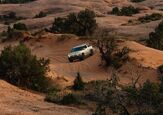
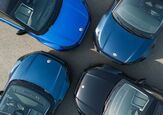























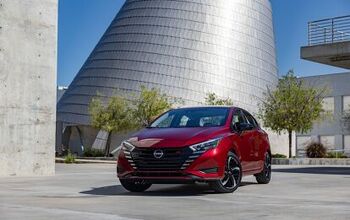
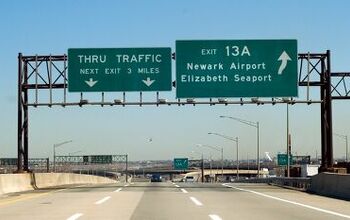
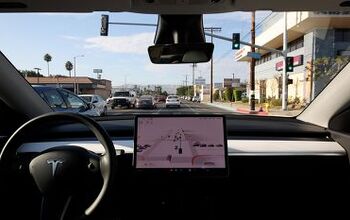
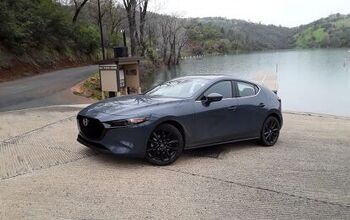
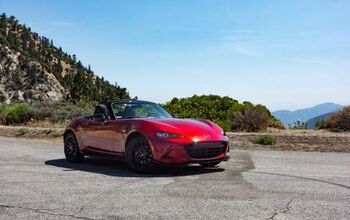

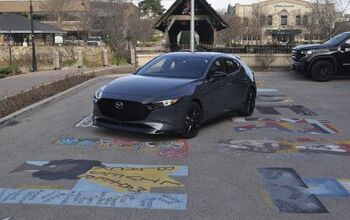
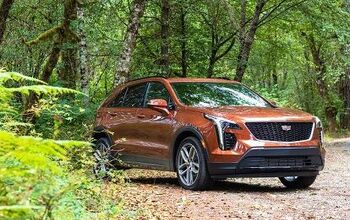
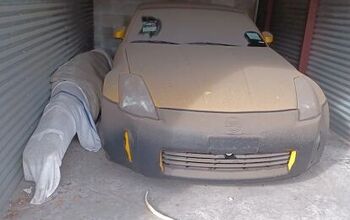

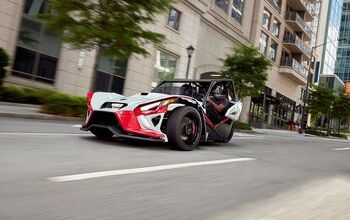

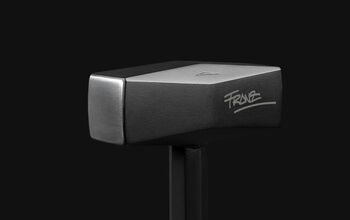
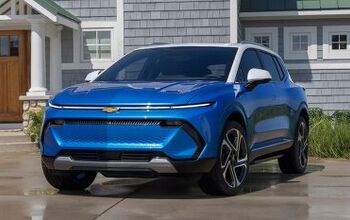
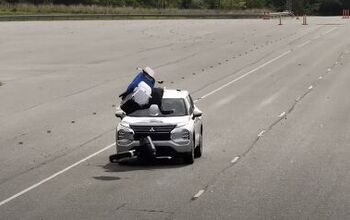

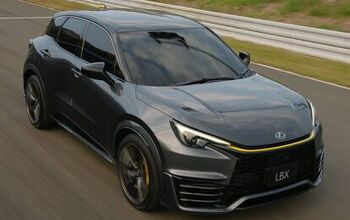

Comments
Join the conversation
Seems barely competitive with the latest VW golf. The 1.4T with the 8 speed transmission is , by all reports, a pretty sweet car with decent performance and excellent MPG. And VW will sell you a GTI if you want more.
I'm a fan of Mazda, but I have to wonder if this is the right move. I sold VWs back when the MK4 Jetta came out. The upcoming Mazda 3 reminds me of the reincarnation of the that Jetta. Premium interior vs. rest of class. Somewhat out of the mainstream brand. Poor rear seat legroom. Expensive versus competition. We could get away with that in 1999 or 2000 because people still bought small sedans at that time. Also, we didn't have competition nearly as good as, say the current Honda Civic. Kias were garbage twenty years ago, as were Hyundais. Not anymore. In 2000, we could sell some Jettas because there were a few people willing to pony up more cash to drive what was seen as a premium small sedan. To a certain number of people, being seen in a Jetta was more upscale than being seen driving a Civic, and they were willing to overlook the shoddy reliability and cramped rear quarters to project that image. I don't see Mazda selling many near-$30k small sedans and hatchbacks. Honda probably sells a lot more LX and EX Civics than they do Touring models. The number of folks who are willing to spend, say, $28k on a Mazda3 is very small, I'd guess. The Jetta buyers of year 2000 are compact SUV buyers today. The market for a small, premium car from a brand with little to no luxury gravitas is miniscule. I'm wondering if Mazda is about 15 years too late to this particular party.